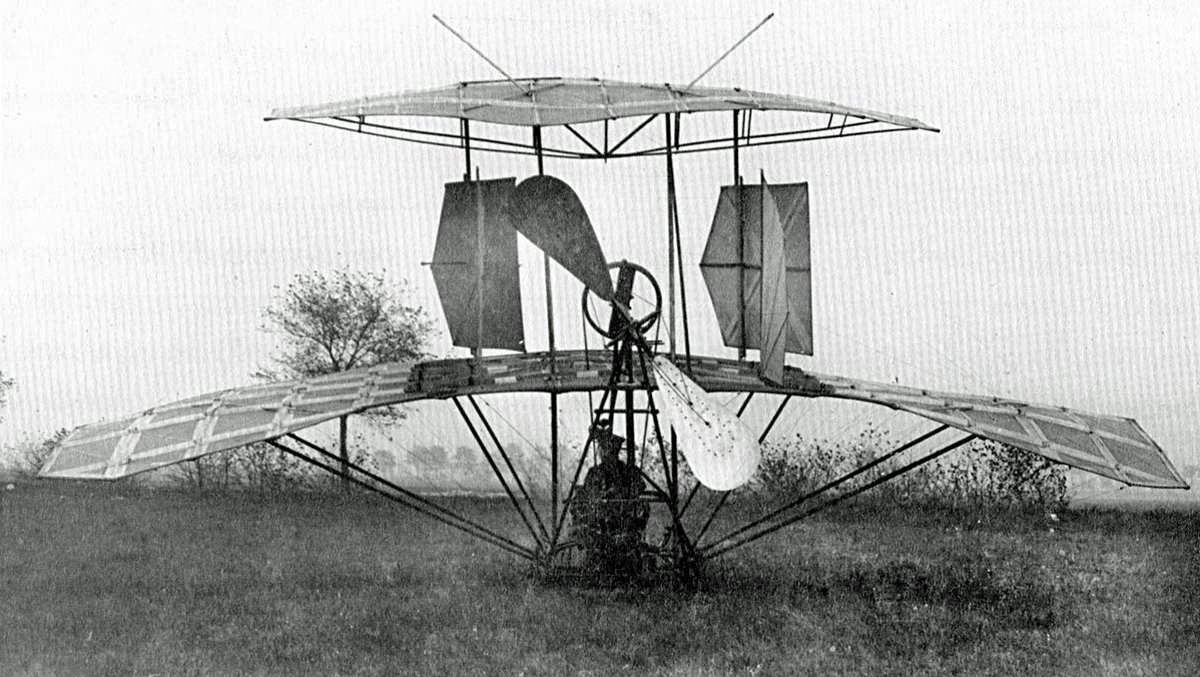The Jatho Biplane and a Challenge to the Wright Brothers
Photo of Karl Jatho’s Biplane, which allegedly made a powered flight in November 1903, one month before the Wright Brothers achieved the same feat.
History is an incomplete science. It relies on large amounts of trust for those who keep the records and report the events. This is especially true of firsts throughout history. There’s always the possibility, however remote, that someone or something got there beforehand but there was no record of it. This possibility is quite small with events such as the world’s tallest building, since they are so large and tend to last for so long. Events like the world’s first powered flight, however, are quite ephemeral and much harder to nail down.
Pictured above is the Jatho Biplane, built in 1903 by the German aviation pioneer Karl Jatho. During 1903, Jatho made a series of low flights with his machine outside Hanover, Germany. These flights took place a few months before the Wright Brothers famously achieved powered, controlled flight. We don’t know for sure if the Jatho Biplane was controlled, however. If it was, that means the Wright Brothers weren’t the first to achieve flight. If it wasn’t, the Jatho Biplane is just another prototype that got close but didn’t actually achieve flight.
The plot thickens. Some thirty years after 1903, a handful of witnesses testified that the Jatho Biplane had indeed flew and was indeed controlled. Based on this testimony, Karl Jatho achieved the world’s first powered and controlled flight. It begs the question though: why did they wait thirty years to share that information? It seems quite possible that the Jatho Biplane was able to glide through the air, but whether it was controlled or not is much more difficult to prove. Furthermore, there are conflicting reports that seem to point in both directions. A newspaper article referred to Jatho’s controllable air vehicles. A legal document rejecting Jatho’s request for a legal test exam describes his design as lacking control mechanisms. We don’t know exactly what happened, we only have a set of conflicting evidence.
Photo of Karl Jatho’s Biplane from 1907.
Regardless of the truth, the Jatho Biplane still claims its spot in the history books. It successfully flew for short distances, but apparently it couldn’t sustain its own flight and it lacked sufficient control mechanisms. According to Jatho himself, the motor wasn’t powerful enough to sustain the craft in flight, and he gave up trying. This is a frustrating aspect of history: in many cases we don’t have an actual truth, but rather a set of clues that point us toward a logical idea of the truth. Perhaps the Jatho Biplane did fly a few months before the Wright Brothers did. Perhaps it didn’t. Unfortunately, we’ll never know for sure.
Read more about other ideas for flying machines here.


